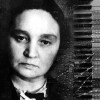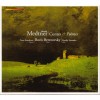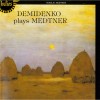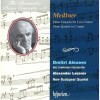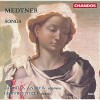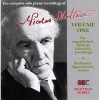Composers
Nikolai Karlovich Medtner (5 January 1880 [O.S. 24 December 1879] –13 November 1951) was a Russian composer and pianist.
A younger contemporary of Sergei Rachmaninoff and Alexander Scriabin, he wrote a substantial number of compositions, all of which include the piano. His works include fourteen piano sonatas, three violin sonatas, three piano concerti, a piano quintet, three works for two pianos, many shorter piano pieces, and 108 songs including two substantial works for vocalise. His 38 piano pieces for which he appears to have invented the title Skazki (generally known as "Fairy Tales" in English but more correctly translated as "Tales") contain some of his most original music and are as central to his output as the piano sonatas.
According to the Julian calendar then in use in Russia, Nikolai Medtner was born on Christmas Eve, 1879. He was born in Moscow, the youngest of five children. According to the Gregorian calendar, in use in the west at the time, and by which all dates are calculated today, his date of birth is 5 January 1880.
Medtner first took piano lessons from his mother until the age of ten, when he entered the Moscow Conservatory. He graduated in 1900 at the age of 20, taking the Anton Rubinstein prize, having studied under Pavel Pabst, Wassily Sapellnikoff, Vasily Safonov and Sergei Taneyev among others. Despite his conservative musical tastes, Medtner's compositions and his pianism were highly regarded by his contemporaries. To the consternation of his family, but with the support of his former teacher Taneyev, he soon rejected a career as a performer and turned to composition, partly inspired by the intellectual challenge of Ludwig van Beethoven's late piano sonatas and string quartets. Among his students in this period was Alexander Vasilyevich Alexandrov.
During the years leading up to the 1917 Russian Revolution, Medtner lived at home with his parents. During this time Medtner fell in love with Anna Mikhaylovna Bratenskaya, a respected violinist and the young wife of his older brother Emil. Later, when World War I broke out, Emil was interned in Germany where he had been studying. He generously gave Anna the freedom to marry his brother. Medtner and Anna were married in 1918.
Unlike his friend Rachmaninoff, Medtner did not leave Russia until well after the Revolution. Rachmaninoff secured Medtner a tour of the United States and Canada in 1924; his recitals were often all-Medtner evenings consisting of sonatas interspersed with songs and shorter pieces. Medtner never adapted himself to the commercial aspects of touring and his concerts became infrequent. Esteemed in England, he settled in London in 1936, modestly teaching, playing and composing to a strict daily routine.
At the outbreak of the Second World War, Medtner's income from German publishers disappeared, and during this hardship ill-health became an increasing problem. His devoted pupil Edna Iles gave him shelter in Warwickshire where he completed his Third Piano Concerto, performing it at a 1943 Promenade Concert.
In 1949 a Medtner Society was founded in London by His Highness Jayachamaraja Wodeyar Bahadur, The Maharajah of Mysore. (Mysore is part of India, now a state of Karnataka.) His Highness was an honorary Fellow of Trinity College of Music, London, in 1945 and also the first president of the Philharmonia Concert Society, London. He founded the Medtner Society to record all of Medtner's works. Medtner, already in declining health, recorded his three Piano Concertos and some sonatas, chamber music, numerous songs and shorter works before his death in London in 1951. In one of these recordings he partnered Benno Moiseiwitsch in his two-piano work entitled "Russian Round-Dance", Op 58, No. 1; in another he accompanied Elisabeth Schwarzkopf in several of his lieder, including The Muse, a Pushkin setting from 1913. These historic recordings demonstrate Medtner's forceful magnetic pianism and creative personality, generally undimmed by his undoubtedly failing health. In gratitude to his patron, Medtner dedicated his Third Piano Concerto to the Maharajah.
Medtner died at his home, 69 Wentworth Road, Golders Green, London in 1951, and is buried in Hendon Cemetery.
The First Piano Sonata in F minor, Op. 5, is a four-movement work from 1902–3 suggesting the style of Scriabin or Rachmaninoff, but nonetheless original. Medtner's craft gained subtlety and complexity in later years, but this work is already evidence of his mastery of musical structure. An opening Allegro, dramatic and imbued like much Russian music with a bell-like sonority, is separated by a rhythmic and forceful Intermezzo from a Largo divoto which reaches a Maestoso climax before plunging into the headlong Allegro risoluto finale.
The Second, Third and Fourth piano sonatas are unrelated one-movement works. They were written during the period 1904-7 and published as the "Sonata-Triad", Op. 11. The first of the trio, in A-flat, is an ecstatic work with attractive, lyrical themes, prefaced by a poem by Goethe. The second, in D minor, is entitled "Sonate-Elegie". It opens slowly with one of Medtner's most memorable themes and closes with an animated coda (Allegro molto doppio movimento, in D major) based on the second subject. The third, in C, returns to the lyricism of the first.
The Fifth and formerly the most popular of his sonatas is the G minor, Op. 22, written in 1909–1910. The piece alternates a slow introduction with a three-theme, propulsive sonata movement, one of whose themes was heard in the Introduction. The emotional center of this compact work (sixteen minutes in duration) is the Interludium: Andante lugubre: this comprises most of the development section and contains some of Medtner's loveliest harmonies. There are historic recordings by Moiseiwitch and Gilels.
The Sixth Sonata followed soon after, the first of two that comprise his Op. 25. It bears the title "Sonata-Skazka", usually translated as "Fairy Tale Sonata". This short work in C minor, written in 1910–11, is in three movements; the second and third are connected. The first movement is a compact sonata-form, the slow movement rondo-like (the similarity to a famous melody by Rachmaninoff is coincidental, as the latter was not written until some thirty years later!). A minatory final march with variations ends with a Coda that revisits earlier material. This was the only Medtner sonata that Rachmaninoff performed.
The other half of Op. 25 is entirely different. The Seventh Sonata in E minor, "Night Wind", after Fyodor Tyutchev's 1832 poem "Of what do you howl, night wind...?" (Russian: О чем ты воешь, ветр ночной...?, tr. O chem ty voesh', vetr nochnoy...?), an excerpt of which provides an epigraph, was completed in 1911 and dedicated to Sergei Rachmaninoff, who immediately recognised its greatness. It is a vast one-movement work, lasting almost 35 minutes, in two major parts: an Introduction and Allegro sonata-form, followed by a Fantasy capped by a shadowy but active Coda, the latter entirely and ingeniously based on material presented in the Introduction. Under the title "Sonata" Medtner added a note: "The whole piece is in an epic spirit" (Вся пьеса в эпическом духе). As Geoffrey Tozer put it, this work "has the reputation of being a fearsomely difficult work of extraordinary length, exhausting to play and to hear, but of magnificent quality and marvelous invention."
The Eighth "Sonata-Ballade" in F-sharp, Op. 27, began as a one-movement work and expanded into its present form over the period 1912–14. It comprises a Ballade, Introduction and Finale. The tonality and some of the material make passing reference to Chopin's Barcarole. The first movement opens with one of Medtner's lovely pastoral melodies. The finale, like the Piano Quintet, has a thematic connection with his Pushkin setting The Muse. Medtner himself recorded this work.
The one-movement Ninth Sonata in A minor, Op. 30, was published without a title but was known as the "War Sonata" among Medtner's friends; a footnote "during the war 1914-1917" appeared in the 1959 Collected Edition. It is a dark, terse and harmonically exploratory work of considerable power.
The Tenth "Sonata-reminiscenza" in A minor, Op. 38, No. 1, commences a set of eight pieces entitled "Forgotten Melodies (First Cycle)". Two further cycles followed, published as Opp. 39 and 40. Both this and the following sonata were completed in 1920, the year before Medtner emigrated. This single movement is one of Medtner's most poetic creations; as the title indicates, its character is nostalgic and wistful. Other pieces in opus 38 contain variants of the Sonata's opening theme, such as the concluding "Alla Reminiscenza". This sonata is nowadays the most often performed.
The Eleventh, "Sonata Tragica" in C minor, Op. 39, No. 5, concludes "Forgotten Melodies (Second Cycle)". There is some repetition of themes in this set as well— the piece which precedes the Sonata, "Canzona Matinata", contains a theme which recurs in the Sonata, and according to Medtner's wishes both pieces are to be played attacca — without pause. This is also a single movement sonata-form, but Allegro, dramatic and ferocious, with three themes of which one (the reminiscence from "Canzona Matinata") fails to return. A violent coda concludes. This sonata is well served by recordings, including one by Medtner in 1947.
The Twelfth Sonata, entitled "Romantica" in B-flat minor, Op. 53, No. 1, was written some years later, along with its twin. It was premièred in Glasgow in 1931, having been completed at the end of the previous year. Returning to a four-movement form, it consists of a Romance (B-flat minor), Scherzo (E-flat minor), Meditazione (B minor,) and Finale (B-flat minor). The ending quotes his Sonata-Skazka, Op. 25, No. 1.
The Thirteenth Sonata, the "Minacciosa" in F minor, Op. 53, No. 2, is another one-movement work. It lives up to the "menacing" character of the title and is highly chromatic, with an impressive fugue. Medtner described it as "my most contemporary composition, for it reflects the threatening atmosphere of contemporary events". It is intellectually demanding for both listener and pianist: according to Marc-André Hamelin "the most concentrated 15 minutes of music one could ever hope to play or listen to; its rewards go far beyond initial impressions". It was dedicated to the Canadian pianist and pupil of Scriabin, Alfred La Liberté, one of Medtner's most loyal supporters.
The last of the sonatas, "Sonata-Idyll" in G major, Op. 56, was completed in 1937. This is a gentle, two-movement work — a short Allegretto cantabile Pastorale and a rondo Allegro moderato e cantabile (sempre al rigore di tempo) with delicate harmonic colorings, in which the "cantabile" indications in both movements reflect the overall mood.
Piano Concerto No. 1 in C minor, Op. 33 (1914–18). Dedicated to the composer's mother, this one-movement work opens with an exposition section setting out the material for the work, the opening pages of which erupt with fireworks from the piano against a memorable, surging orchestral statement of the subject. A set of variations make up the central development before the opening returns two thirds of the way through the piece. Eventually the coda sets out the romantic "big tune" before the final pages lead to an unexpectedly bittersweet ending.
Piano Concerto No. 2 in C minor, Op. 50 (1920–27). Dedicated to Rachmaninoff, who dedicated his own Fourth Concerto to Medtner. In three movements: Toccata, and a Romanza from which follows a Divertimento. The first movement is propulsive with kinetic energy, and there is much dialogue between piano and orchestra (a subsidiary theme resembles the Fairy Tale from the Op. 14 (1906–07) pair, the March of the Paladin). The Romanza and Divertimento are each in their own way varied in character, the Divertimento particularly rich in inspiration.
Piano Concerto No. 3 in E minor "Ballade", Op. 60, 1940–43. The factors which led to the creation of this work are closely connected to the circumstances of his final years. It is dedicated to his generous patron, the Maharajah of Mysore. Three connected movements: the first, Con moto largamente, sustained and profound, slowly developing motion and energy; the second an Interludium, Allegro, molto sostenuto, misterioso quotes the first movement and prefigures the finale; a lengthy Allegro molto. Svegliando, eroico vigorously concludes the work. Medtner recorded all three Concertos with the Philharmonia Orchestra in 1947.
Violin Sonata No. 3 in E minor, Op. 57 (1938). Recorded by David Oistrakh among others. A vast work in four movements, a counterpart to his "Night Wind" Piano Sonata, No. 7. Introduzione — Andante meditamente, Scherzo — Allegro molto vivace, leggiero, Andante con moto, Finale — Allegro molto. A motto theme in the Introduction juxtaposes chords quietly but insistently, joined by a melody on the violin. The melody becomes the first theme of the — lengthy — sonata-form movement that follows, juxtaposed with other themes including a march in imitation. The folksy and syncopated Scherzo in A minor, thematically related to the opening movement’s faster sections, is in Rondo-form. After a reminiscence of the motto, the Andante is a lament in F minor, extremely Russian in sentiment. The virtuoso Finale has thematic elements related to Russian Orthodox liturgical music (Medtner was born Lutheran but late in life converted to Orthodox).
The Piano Quintet in C major, Op. posth., was published after the composer's death. He worked on sketches of the work from 1903 until its completion in 1949. Medtner considered it the ultimate summary of his musical life and it contains some of his finest and most spiritual music. Medtner recorded the work in the last years of his life, but that recording has never been commercially released. There are a number of contemporary recordings in the catalogue.
Whether Medtner’s music makes inroads into the wider repertoire or remains the territory of a few performers and listeners depends on whether it is true that he sacrificed melodic interest, beauty, and communicativeness (or enough of them) on the altar of complexity, the sonata form, and counterpoint. Nonetheless, it is undeniable that Medtner possessed considerable skill in writing heartfelt melody of rare beauty and an uncanny skill in developing thematic material. Imbued with a restless quality that demands repeated listenings to penetrate, Medtner's music often has a psychologically intense, almost demonic character. The piano works in particular are notoriously difficult to sight-read and require enormous technical and intellectual resources to perform. Yet Medtner's best melodies speak to the listener on a direct emotional level. It may be that some of his works are better advocates for him in this respect—his songs and concertos are more directly communicative than the solo piano music, the violin sonatas more extroverted—but it is also true that his music is now that of a cult composer, at least in reputation and possibly in fact.
Geoffrey Tozer recorded almost all of Medtner's works for the piano including all the concertos and sonatas. Hamish Milne has recorded most of the solo piano works, while Geoffrey Douglas Madge and Konstantin Scherbakov have recorded the three piano concertos. Other pianists who championed Medtner's work and left behind recordings include Benno Moiseiwitsch, Sviatoslav Richter, Edna Iles, Emil Gilels, Yevgeny Svetlanov, Earl Wild and Malcolm Binns. In modern times, pianists noted for their advocacy include Marc-André Hamelin, Irina Mejoueva, Nikolai Demidenko, Boris Berezovsky, Paul Stewart, Dmitri Alexeev, Andrey Ponochevny and Yevgeny Sudbin. The last 20 years have seen a big increase in recording activity, if not in live performances, and the solo piano and chamber music discography is looking quite healthy.
Far fewer singers have tackled the songs. Medtner himself recorded a selection with the sopranos Oda Slobodskaya, Tatiana Makushina, Margaret Ritchie and Elisabeth Schwarzkopf. In recent times Susan Gritton and Ludmilla Andrew have recorded complete CDs with Geoffrey Tozer, as has Caroline Vitale with Peter Baur. The bass-baritone Vassily Savenko has recorded a considerable number of Medtner songs with Boris Berezovsky, Alexander Blok and Victor Yampolsky. A handful of other singers have included Medtner songs in compilations; particularly notable are historic recordings by Zara Dolukhanova and Irina Arkhipova. However many songs are not available on CD, and some await their first recording.
Medtner recorded piano rolls of some of his works for Welte-Mignon in 1923 and Duo-Art in 1925.
Medtner's one book, The Muse and the Fashion, being a defence of the foundations of the art of music (1935, reprinted 1957 and 1978) was a statement of his artistic credo and reaction to some of the trends of the time. He believed strongly that there were immutable laws to music, whose essence was in song. The English translation of The Muse and the Fashion by Alfred Swan (1951) is hard to find outside US libraries.
Barrie Martyn's Nicolas Medtner: His Life and Music (ISBN 0-85967-959-4) is a scholarly account of the composer's life and works. It provides the biographical context of every composition along with musical analysis or commentary. Extracts from letters, contemporary sources, and compositions are interspersed throughout the narrative, along with a good number of photographs.
After Medtner's death, the Mysore Foundation sponsored the publication of Medtner: A Memorial Volume, also titled Nicolas Medtner (1879-1951): A Tribute to his Art and Personality. It contains photographs and essays from his widow, friends, critics, musicians, composers, and admirers. A few of the contributors were: Alfred Swan, translator of Medtner's The Muse and the Fashion into English, Ivan Ilyin, Ernest Newman, Kaikhosru Shapurji Sorabji, Marcel Dupré, Russian music critic Leonid Sabeneev, Canadian pianist and close friend of the composer Alfred La Liberté, singers Margaret Ritchie, Tatania Makushina and Oda Slobodskaya, and Medtner himself via extracts from Muse and the Fashion. The editor of the volume was Richard Holt.
Robert Rimm's The Composer-Pianists: Hamelin and the Eight (ISBN 1-57467-072-7) contains a chapter on Medtner and Rachmaninoff.
In 2004, Natalia Konsistorum published, in Russian, Nikolai Karlovich Medtner: Portrait of a Composer (ISBN 3-89487-500-3). The book is available in a German translation by Christoph Flamm and is notable for the two CDs it contains with original recordings of a variety of Medtner's works.
There have been numerous dissertations on Medtner's music. One of the most influential is Der russische Komponist Nikolaj Metner : Studien und Materialien by Christoph Flamm. Originally presented as the author's Ph.D thesis (Heidelberg, 1995), it was published by Kuhn (ISBN 3-928864-24-6, 1995, out of print). It includes letters, reviews and other documents in German, Russian, English and French, a bibliography and partial discography.
In 2003, David J. Skvorak wrote a doctoral thesis Thematic unity in Nicolas Medtner's works for piano : Skazki, sonatas, and piano quintet at the University of Cincinnati, published by UMI. It contains theoretical analyses of several of Medtner's works.
Recently Added
| Country: | Russia |
| Period: | Romantique |
Biography
Nikolai Karlovich Medtner (5 January 1880 [O.S. 24 December 1879] –13 November 1951) was a Russian composer and pianist.
A younger contemporary of Sergei Rachmaninoff and Alexander Scriabin, he wrote a substantial number of compositions, all of which include the piano. His works include fourteen piano sonatas, three violin sonatas, three piano concerti, a piano quintet, three works for two pianos, many shorter piano pieces, and 108 songs including two substantial works for vocalise. His 38 piano pieces for which he appears to have invented the title Skazki (generally known as "Fairy Tales" in English but more correctly translated as "Tales") contain some of his most original music and are as central to his output as the piano sonatas.
According to the Julian calendar then in use in Russia, Nikolai Medtner was born on Christmas Eve, 1879. He was born in Moscow, the youngest of five children. According to the Gregorian calendar, in use in the west at the time, and by which all dates are calculated today, his date of birth is 5 January 1880.
Medtner first took piano lessons from his mother until the age of ten, when he entered the Moscow Conservatory. He graduated in 1900 at the age of 20, taking the Anton Rubinstein prize, having studied under Pavel Pabst, Wassily Sapellnikoff, Vasily Safonov and Sergei Taneyev among others. Despite his conservative musical tastes, Medtner's compositions and his pianism were highly regarded by his contemporaries. To the consternation of his family, but with the support of his former teacher Taneyev, he soon rejected a career as a performer and turned to composition, partly inspired by the intellectual challenge of Ludwig van Beethoven's late piano sonatas and string quartets. Among his students in this period was Alexander Vasilyevich Alexandrov.
During the years leading up to the 1917 Russian Revolution, Medtner lived at home with his parents. During this time Medtner fell in love with Anna Mikhaylovna Bratenskaya, a respected violinist and the young wife of his older brother Emil. Later, when World War I broke out, Emil was interned in Germany where he had been studying. He generously gave Anna the freedom to marry his brother. Medtner and Anna were married in 1918.
Unlike his friend Rachmaninoff, Medtner did not leave Russia until well after the Revolution. Rachmaninoff secured Medtner a tour of the United States and Canada in 1924; his recitals were often all-Medtner evenings consisting of sonatas interspersed with songs and shorter pieces. Medtner never adapted himself to the commercial aspects of touring and his concerts became infrequent. Esteemed in England, he settled in London in 1936, modestly teaching, playing and composing to a strict daily routine.
At the outbreak of the Second World War, Medtner's income from German publishers disappeared, and during this hardship ill-health became an increasing problem. His devoted pupil Edna Iles gave him shelter in Warwickshire where he completed his Third Piano Concerto, performing it at a 1943 Promenade Concert.
In 1949 a Medtner Society was founded in London by His Highness Jayachamaraja Wodeyar Bahadur, The Maharajah of Mysore. (Mysore is part of India, now a state of Karnataka.) His Highness was an honorary Fellow of Trinity College of Music, London, in 1945 and also the first president of the Philharmonia Concert Society, London. He founded the Medtner Society to record all of Medtner's works. Medtner, already in declining health, recorded his three Piano Concertos and some sonatas, chamber music, numerous songs and shorter works before his death in London in 1951. In one of these recordings he partnered Benno Moiseiwitsch in his two-piano work entitled "Russian Round-Dance", Op 58, No. 1; in another he accompanied Elisabeth Schwarzkopf in several of his lieder, including The Muse, a Pushkin setting from 1913. These historic recordings demonstrate Medtner's forceful magnetic pianism and creative personality, generally undimmed by his undoubtedly failing health. In gratitude to his patron, Medtner dedicated his Third Piano Concerto to the Maharajah.
Medtner died at his home, 69 Wentworth Road, Golders Green, London in 1951, and is buried in Hendon Cemetery.
The First Piano Sonata in F minor, Op. 5, is a four-movement work from 1902–3 suggesting the style of Scriabin or Rachmaninoff, but nonetheless original. Medtner's craft gained subtlety and complexity in later years, but this work is already evidence of his mastery of musical structure. An opening Allegro, dramatic and imbued like much Russian music with a bell-like sonority, is separated by a rhythmic and forceful Intermezzo from a Largo divoto which reaches a Maestoso climax before plunging into the headlong Allegro risoluto finale.
The Second, Third and Fourth piano sonatas are unrelated one-movement works. They were written during the period 1904-7 and published as the "Sonata-Triad", Op. 11. The first of the trio, in A-flat, is an ecstatic work with attractive, lyrical themes, prefaced by a poem by Goethe. The second, in D minor, is entitled "Sonate-Elegie". It opens slowly with one of Medtner's most memorable themes and closes with an animated coda (Allegro molto doppio movimento, in D major) based on the second subject. The third, in C, returns to the lyricism of the first.
The Fifth and formerly the most popular of his sonatas is the G minor, Op. 22, written in 1909–1910. The piece alternates a slow introduction with a three-theme, propulsive sonata movement, one of whose themes was heard in the Introduction. The emotional center of this compact work (sixteen minutes in duration) is the Interludium: Andante lugubre: this comprises most of the development section and contains some of Medtner's loveliest harmonies. There are historic recordings by Moiseiwitch and Gilels.
The Sixth Sonata followed soon after, the first of two that comprise his Op. 25. It bears the title "Sonata-Skazka", usually translated as "Fairy Tale Sonata". This short work in C minor, written in 1910–11, is in three movements; the second and third are connected. The first movement is a compact sonata-form, the slow movement rondo-like (the similarity to a famous melody by Rachmaninoff is coincidental, as the latter was not written until some thirty years later!). A minatory final march with variations ends with a Coda that revisits earlier material. This was the only Medtner sonata that Rachmaninoff performed.
The other half of Op. 25 is entirely different. The Seventh Sonata in E minor, "Night Wind", after Fyodor Tyutchev's 1832 poem "Of what do you howl, night wind...?" (Russian: О чем ты воешь, ветр ночной...?, tr. O chem ty voesh', vetr nochnoy...?), an excerpt of which provides an epigraph, was completed in 1911 and dedicated to Sergei Rachmaninoff, who immediately recognised its greatness. It is a vast one-movement work, lasting almost 35 minutes, in two major parts: an Introduction and Allegro sonata-form, followed by a Fantasy capped by a shadowy but active Coda, the latter entirely and ingeniously based on material presented in the Introduction. Under the title "Sonata" Medtner added a note: "The whole piece is in an epic spirit" (Вся пьеса в эпическом духе). As Geoffrey Tozer put it, this work "has the reputation of being a fearsomely difficult work of extraordinary length, exhausting to play and to hear, but of magnificent quality and marvelous invention."
The Eighth "Sonata-Ballade" in F-sharp, Op. 27, began as a one-movement work and expanded into its present form over the period 1912–14. It comprises a Ballade, Introduction and Finale. The tonality and some of the material make passing reference to Chopin's Barcarole. The first movement opens with one of Medtner's lovely pastoral melodies. The finale, like the Piano Quintet, has a thematic connection with his Pushkin setting The Muse. Medtner himself recorded this work.
The one-movement Ninth Sonata in A minor, Op. 30, was published without a title but was known as the "War Sonata" among Medtner's friends; a footnote "during the war 1914-1917" appeared in the 1959 Collected Edition. It is a dark, terse and harmonically exploratory work of considerable power.
The Tenth "Sonata-reminiscenza" in A minor, Op. 38, No. 1, commences a set of eight pieces entitled "Forgotten Melodies (First Cycle)". Two further cycles followed, published as Opp. 39 and 40. Both this and the following sonata were completed in 1920, the year before Medtner emigrated. This single movement is one of Medtner's most poetic creations; as the title indicates, its character is nostalgic and wistful. Other pieces in opus 38 contain variants of the Sonata's opening theme, such as the concluding "Alla Reminiscenza". This sonata is nowadays the most often performed.
The Eleventh, "Sonata Tragica" in C minor, Op. 39, No. 5, concludes "Forgotten Melodies (Second Cycle)". There is some repetition of themes in this set as well— the piece which precedes the Sonata, "Canzona Matinata", contains a theme which recurs in the Sonata, and according to Medtner's wishes both pieces are to be played attacca — without pause. This is also a single movement sonata-form, but Allegro, dramatic and ferocious, with three themes of which one (the reminiscence from "Canzona Matinata") fails to return. A violent coda concludes. This sonata is well served by recordings, including one by Medtner in 1947.
The Twelfth Sonata, entitled "Romantica" in B-flat minor, Op. 53, No. 1, was written some years later, along with its twin. It was premièred in Glasgow in 1931, having been completed at the end of the previous year. Returning to a four-movement form, it consists of a Romance (B-flat minor), Scherzo (E-flat minor), Meditazione (B minor,) and Finale (B-flat minor). The ending quotes his Sonata-Skazka, Op. 25, No. 1.
The Thirteenth Sonata, the "Minacciosa" in F minor, Op. 53, No. 2, is another one-movement work. It lives up to the "menacing" character of the title and is highly chromatic, with an impressive fugue. Medtner described it as "my most contemporary composition, for it reflects the threatening atmosphere of contemporary events". It is intellectually demanding for both listener and pianist: according to Marc-André Hamelin "the most concentrated 15 minutes of music one could ever hope to play or listen to; its rewards go far beyond initial impressions". It was dedicated to the Canadian pianist and pupil of Scriabin, Alfred La Liberté, one of Medtner's most loyal supporters.
The last of the sonatas, "Sonata-Idyll" in G major, Op. 56, was completed in 1937. This is a gentle, two-movement work — a short Allegretto cantabile Pastorale and a rondo Allegro moderato e cantabile (sempre al rigore di tempo) with delicate harmonic colorings, in which the "cantabile" indications in both movements reflect the overall mood.
Piano Concerto No. 1 in C minor, Op. 33 (1914–18). Dedicated to the composer's mother, this one-movement work opens with an exposition section setting out the material for the work, the opening pages of which erupt with fireworks from the piano against a memorable, surging orchestral statement of the subject. A set of variations make up the central development before the opening returns two thirds of the way through the piece. Eventually the coda sets out the romantic "big tune" before the final pages lead to an unexpectedly bittersweet ending.
Piano Concerto No. 2 in C minor, Op. 50 (1920–27). Dedicated to Rachmaninoff, who dedicated his own Fourth Concerto to Medtner. In three movements: Toccata, and a Romanza from which follows a Divertimento. The first movement is propulsive with kinetic energy, and there is much dialogue between piano and orchestra (a subsidiary theme resembles the Fairy Tale from the Op. 14 (1906–07) pair, the March of the Paladin). The Romanza and Divertimento are each in their own way varied in character, the Divertimento particularly rich in inspiration.
Piano Concerto No. 3 in E minor "Ballade", Op. 60, 1940–43. The factors which led to the creation of this work are closely connected to the circumstances of his final years. It is dedicated to his generous patron, the Maharajah of Mysore. Three connected movements: the first, Con moto largamente, sustained and profound, slowly developing motion and energy; the second an Interludium, Allegro, molto sostenuto, misterioso quotes the first movement and prefigures the finale; a lengthy Allegro molto. Svegliando, eroico vigorously concludes the work. Medtner recorded all three Concertos with the Philharmonia Orchestra in 1947.
Violin Sonata No. 3 in E minor, Op. 57 (1938). Recorded by David Oistrakh among others. A vast work in four movements, a counterpart to his "Night Wind" Piano Sonata, No. 7. Introduzione — Andante meditamente, Scherzo — Allegro molto vivace, leggiero, Andante con moto, Finale — Allegro molto. A motto theme in the Introduction juxtaposes chords quietly but insistently, joined by a melody on the violin. The melody becomes the first theme of the — lengthy — sonata-form movement that follows, juxtaposed with other themes including a march in imitation. The folksy and syncopated Scherzo in A minor, thematically related to the opening movement’s faster sections, is in Rondo-form. After a reminiscence of the motto, the Andante is a lament in F minor, extremely Russian in sentiment. The virtuoso Finale has thematic elements related to Russian Orthodox liturgical music (Medtner was born Lutheran but late in life converted to Orthodox).
The Piano Quintet in C major, Op. posth., was published after the composer's death. He worked on sketches of the work from 1903 until its completion in 1949. Medtner considered it the ultimate summary of his musical life and it contains some of his finest and most spiritual music. Medtner recorded the work in the last years of his life, but that recording has never been commercially released. There are a number of contemporary recordings in the catalogue.
Whether Medtner’s music makes inroads into the wider repertoire or remains the territory of a few performers and listeners depends on whether it is true that he sacrificed melodic interest, beauty, and communicativeness (or enough of them) on the altar of complexity, the sonata form, and counterpoint. Nonetheless, it is undeniable that Medtner possessed considerable skill in writing heartfelt melody of rare beauty and an uncanny skill in developing thematic material. Imbued with a restless quality that demands repeated listenings to penetrate, Medtner's music often has a psychologically intense, almost demonic character. The piano works in particular are notoriously difficult to sight-read and require enormous technical and intellectual resources to perform. Yet Medtner's best melodies speak to the listener on a direct emotional level. It may be that some of his works are better advocates for him in this respect—his songs and concertos are more directly communicative than the solo piano music, the violin sonatas more extroverted—but it is also true that his music is now that of a cult composer, at least in reputation and possibly in fact.
Geoffrey Tozer recorded almost all of Medtner's works for the piano including all the concertos and sonatas. Hamish Milne has recorded most of the solo piano works, while Geoffrey Douglas Madge and Konstantin Scherbakov have recorded the three piano concertos. Other pianists who championed Medtner's work and left behind recordings include Benno Moiseiwitsch, Sviatoslav Richter, Edna Iles, Emil Gilels, Yevgeny Svetlanov, Earl Wild and Malcolm Binns. In modern times, pianists noted for their advocacy include Marc-André Hamelin, Irina Mejoueva, Nikolai Demidenko, Boris Berezovsky, Paul Stewart, Dmitri Alexeev, Andrey Ponochevny and Yevgeny Sudbin. The last 20 years have seen a big increase in recording activity, if not in live performances, and the solo piano and chamber music discography is looking quite healthy.
Far fewer singers have tackled the songs. Medtner himself recorded a selection with the sopranos Oda Slobodskaya, Tatiana Makushina, Margaret Ritchie and Elisabeth Schwarzkopf. In recent times Susan Gritton and Ludmilla Andrew have recorded complete CDs with Geoffrey Tozer, as has Caroline Vitale with Peter Baur. The bass-baritone Vassily Savenko has recorded a considerable number of Medtner songs with Boris Berezovsky, Alexander Blok and Victor Yampolsky. A handful of other singers have included Medtner songs in compilations; particularly notable are historic recordings by Zara Dolukhanova and Irina Arkhipova. However many songs are not available on CD, and some await their first recording.
Medtner recorded piano rolls of some of his works for Welte-Mignon in 1923 and Duo-Art in 1925.
Medtner's one book, The Muse and the Fashion, being a defence of the foundations of the art of music (1935, reprinted 1957 and 1978) was a statement of his artistic credo and reaction to some of the trends of the time. He believed strongly that there were immutable laws to music, whose essence was in song. The English translation of The Muse and the Fashion by Alfred Swan (1951) is hard to find outside US libraries.
Barrie Martyn's Nicolas Medtner: His Life and Music (ISBN 0-85967-959-4) is a scholarly account of the composer's life and works. It provides the biographical context of every composition along with musical analysis or commentary. Extracts from letters, contemporary sources, and compositions are interspersed throughout the narrative, along with a good number of photographs.
After Medtner's death, the Mysore Foundation sponsored the publication of Medtner: A Memorial Volume, also titled Nicolas Medtner (1879-1951): A Tribute to his Art and Personality. It contains photographs and essays from his widow, friends, critics, musicians, composers, and admirers. A few of the contributors were: Alfred Swan, translator of Medtner's The Muse and the Fashion into English, Ivan Ilyin, Ernest Newman, Kaikhosru Shapurji Sorabji, Marcel Dupré, Russian music critic Leonid Sabeneev, Canadian pianist and close friend of the composer Alfred La Liberté, singers Margaret Ritchie, Tatania Makushina and Oda Slobodskaya, and Medtner himself via extracts from Muse and the Fashion. The editor of the volume was Richard Holt.
Robert Rimm's The Composer-Pianists: Hamelin and the Eight (ISBN 1-57467-072-7) contains a chapter on Medtner and Rachmaninoff.
In 2004, Natalia Konsistorum published, in Russian, Nikolai Karlovich Medtner: Portrait of a Composer (ISBN 3-89487-500-3). The book is available in a German translation by Christoph Flamm and is notable for the two CDs it contains with original recordings of a variety of Medtner's works.
There have been numerous dissertations on Medtner's music. One of the most influential is Der russische Komponist Nikolaj Metner : Studien und Materialien by Christoph Flamm. Originally presented as the author's Ph.D thesis (Heidelberg, 1995), it was published by Kuhn (ISBN 3-928864-24-6, 1995, out of print). It includes letters, reviews and other documents in German, Russian, English and French, a bibliography and partial discography.
In 2003, David J. Skvorak wrote a doctoral thesis Thematic unity in Nicolas Medtner's works for piano : Skazki, sonatas, and piano quintet at the University of Cincinnati, published by UMI. It contains theoretical analyses of several of Medtner's works.
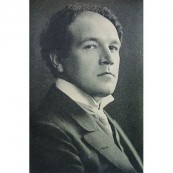



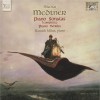
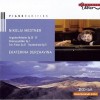
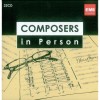
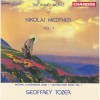
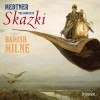
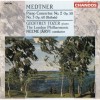
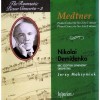
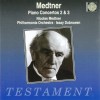
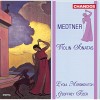


![Russian legends - Emil Gilels [16 CD]](http://static.classicalm.com/repository/collection-cover/small/261-img1318115683212190.jpg)
![Russian legends - David Oistrakh [20 CD]](http://static.classicalm.com/repository/collection-cover/small/267-img1318418713553266.jpg)
![Steinway Legends - Emil Gilels [2 CD]](http://static.classicalm.com/repository/collection-cover/small/235-img1316856590105306.jpg)
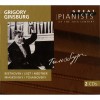
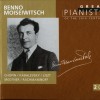
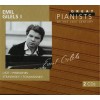
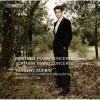
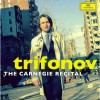
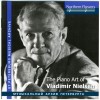
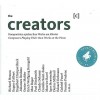
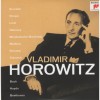
![Tchaikovsky, Medtner - First Piano Concertos [Sudbin]](http://static.classicalm.com/repository/disk-cover/small/6220-img1446304375811475.jpg)
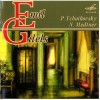
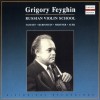
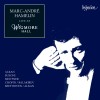
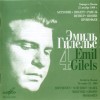
![The Heifetz Collection, Volume 6 [2 CD]](http://static.classicalm.com/repository/disk-cover/small/725-img1315427995644122.jpg)
